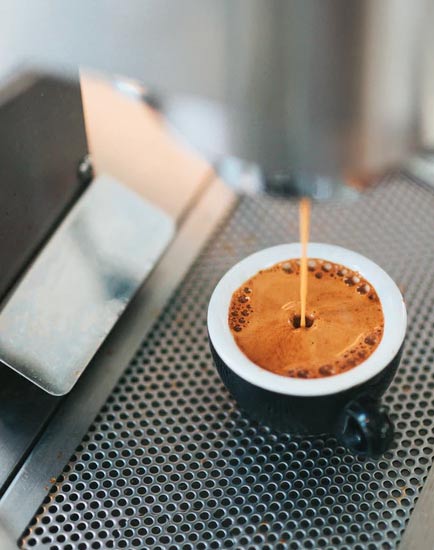Is it possible to achieve the perfect cream in homemade espresso ?

When asking different espresso enthusiasts what is what makes them not to change their favorite coffee, one will get many different answers, but the sure thing is that everyone fall for espresso's cream.
A well-prepared espresso, apart from its dense flavor and its unique aroma, stands out for its cream, the last layer of coffee, which gives its espresso its special texture and its taste. Espresso cream is so important that the National Institute of Italian Espresso, the institute that certifies cafes and bars who serve authentic Italian espresso, not only includes cream in the definition of espresso, but also describes various details about its color, density and texture! The definition of authentic espresso typically indicates that espresso should have "a light to dark brown cream, with a solid texture, without too many small or large bubbles." Besides, one of the first names of espresso, when espresso machines were massively produced, was "caffe crema"!
The espresso owes its cream to its extraction method, during which high temperature water passes through the ground coffee beans at a pressure usually reaching 15 bar. The special way of extracting the espresso gives the coffee unique characteristics, among which is its cream. The cream of espresso is produced from the oils and gases found in the ground coffee beans, and its shape, color and taste (and thus, espresso's success) are based on many factors.
How espresso cream should look ?
In order to be classified as "correct," espresso cream should be brown, with a palette ranging from hazelnut to the darkest tones of brown. A light cream usually shows less extraction time than the recommended one, while a particularly dark cream reveals that the espresso was over extracted several seconds longer than it should be. During the extraction, the cream must be included in the first drops that run from the machine, and it must stand in the glass for more than one minute without "deflating". Finally, it must be homogeneous, without many small or large bubbles, dense, without"patches".

How is espresso cream affected by coffee's freshness ?
The thick, compact cream is a pretty sure sign that our coffee is fresh. Coffee that has been stored for a long time, slowly loses its gases, which are necessary for the creation of the cream. The freshness of coffee, though important, is not a panacea, as several coffees need to "rest" for some time to naturally lose some of their gas. Otherwise, the excessive presence of gases will lead to an espresso with a rich, but weak, cream, lacking the right texture. Of course, the correct composition of the cream is also influenced by other factors, such as grinding, extraction time and barista experience: even the freshest coffee may not perform properly if an inexperienced barista does not extract it correctly.
What other factors are important for espresso's cream?
The cream, in addition to the "hand" and barista experience, depends on factors that affect the natural ingredients of coffee, in particular oils and gasses. Coffees produced with different processing method give cups with different cream: generally, coffees produced by the natural method tend to produce thicker cream than coffees produced by the wet method. Still, the roasting degree affects the cream, meaning that dark roast coffees are known not to produce rich cream. The coffee blend used also matters: despite Arabica's great popularity, Robusta coffee are known for thick cream. If you want to make an espresso, a blend of 80% Arabica - 20% Robusta or 70% Arabica - 30% Robusta will provide the necessary balance, combining the Arabica flavors with the Robusta cream.
If you're one of those who enjoy preparing espresso at home, you realize that the perfect cream (and therefore, the perfect espresso) is a matter requiring experience, practise and a lot of experimentation. Choose fresh, quality coffee, choose the right equipment and practice: the results will soon reward you! On the other hand, if you enjoy your espresso at a coffee shop and the cream does not satisfy you… consider visiting another coffee shop !










